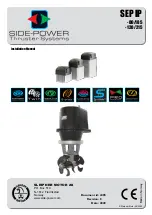
PEAK 637 User‘s Guide
BIOS Setup 3-
5
LCD&CRT:
On board VGA select display type.
Type Function
CRT
Boot from CRT only
LCD
Boot on LCD only
BOTH
Boot both LCD and CRT
AUTO
Boot on CRT or LCD
Error halt
The category determines whether the computer will stop if an error is detected during power up.
No Errors
Whenever the BIOS detects a non-fatal error the system will be stopped and you will be
prompted.
All Errors
The system boot will not be stopped for any error that may be detected.
All, But Keyboard
The system boot will not stop for a keyboard error; it will stop for all other errors.
All, But Diskette
The system boot will not stop for a disk error; it will stop for all other errors.
All, But Disk/Key
The system boot will not stop for a keyboard or disk error; it will stop for all other errors.
Memory
The category is display-only which is determined by POST (Power On Self Test) of the BIOS.
Base Memory
The POST of the BIOS will determine the amount of base (or conventional) memory installed in the system.
The value of the base memory is typically 512K for systems with 512K memory installed on the motherboard,
or 640K for systems with 640K or more memory installed on the motherboard.
Extended Memory
The BIOS determines how much extended memory is present during the POST. This is the amount of
memory located above 1MB in the CPU's memory address map.
Other Memory
This refers to the memory located in the 640K to 1024K address space. This is memory that can be used for
different applications. DOS uses this area to load device drivers to keep as much base memory free for
application programs. Most use for this area is Shadow RAM.
Total Memory
System total memory is the sum of basic memory, extended memory, and other memory.















































